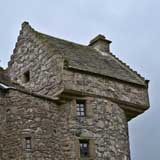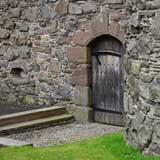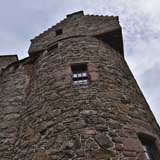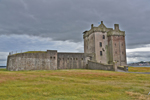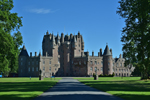History
Claypotts Castle was built in the 16th century by John Strachan of Claypotts during the reign of King James VI. The dates of 1569 and 1588 are carved into the castle's gables. The Strachans worked the lands of Claypotts as tenants of Lindores Abbey before the Protestant Reformation of 1560. With the demise of the Catholic Church during the Reformation, John Strachan and his wife achieved a higher status, enabling them to take over Claypotts and build a castle.
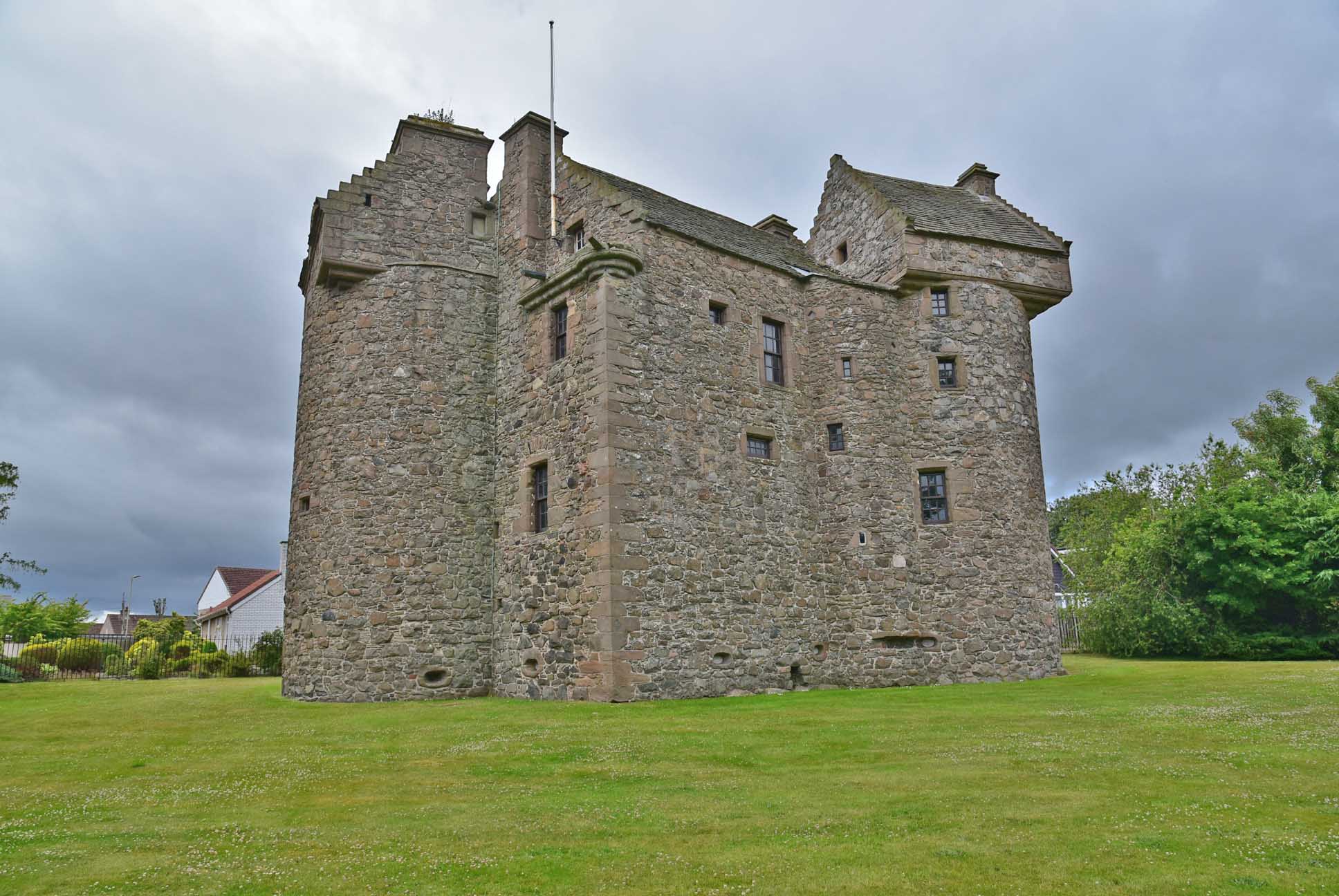
When John Strachan died in 1593, local laird William Graham of Ballunie bought the estate, which was sold by his son David to William Graham of Claverhouse in 1601.
Claypotts Castle became the crown's property after the death of the then-current owner Viscount Dundee John Graham of Claverhouse, who died at the Battle of Killiecrankie in 1689. John Graham was known as "Bloody Clavers" by Presbyterians for his persecution of Covenanters in Galloway and as "Bonnie Dundee" after his death and Jacobite victory at the Battle of Killiecrankie.
The castle was given to James Douglas, 2nd Marquess of Douglas, in 1694. It passed to his son, the Duke of Douglas, and after he died in 1761, it became the subject of an eight-year legal battle until the courts awarded the castle to Archibald Douglas.
Ownership of the castle was later passed to the 13th Earl of Home through marriage, who passed the castle to the state in 1926. Claypotts Castle remains in state care under Historic Environment Scotland, which cares for many historical sites and castles in Scotland.
Castle Highlights
Claypotts Castle resembles something from a fairytale with its stair turrets and corbelling of the attic rooms, much like a small house sitting on top of the castle. It is a gem of Scottish Z-plan castle architecture that has changed little in 500 years. In fact, the roof still survives with much of the original late-medieval wooden timber.
The Z-plan design allowed for the central block to contain a great hall and possibly a long gallery on an upper floor, while the two corner towers had bed chambers, with one tower being dedicated to the laird's family and the other to guests. Claypotts Castle was built when the need for defense gave way to style and comfort. The castle does have 12 gun holes around the ground floor, but they were used more as a deterrent, much like security lights today.
Claypotts Castle can be thoroughly visited in an hour or two. To fill the day, Broughty Castle is just a few miles to the south.
Claypotts Castle is also haunted.
